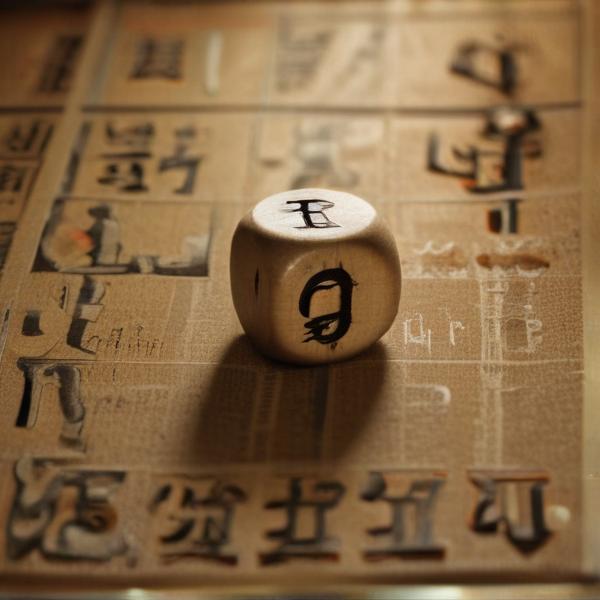基本信息 (Basic Information)
含义与用法 (Meanings & Usage)
中文核心释义 (Core Chinese Meaning): 文字,汉字,书写的符号;名称、称号。
英文核心释义 (Core English Meaning): character, written symbol, Chinese character; name or appellation.
“字”在现代汉语中主要指书写的单个文字(如汉字、字母),也可用作表示“名字”或“字号”。常见用法如“汉字”、“写字”、“识字”。
In modern Chinese, '字' mainly refers to a single written character (such as a Chinese character or letter). It can also refer to a person's courtesy name or appellation. Common uses include terms like '汉字' (Chinese character), '写字' (to write characters), and '识字' (to know/read characters).
象形意义 / 为何这么写 (Pictographic Meaning / Writing Rationale)
“字”由“宀”(屋顶)和“子”(孩子)组成,象征屋内有子,有生养、教育的含义。后引申为用以传承文化的文字。'字' is constructed from '宀' (roof) over '子' (child), symbolizing a child under a roof—conveying meanings of birth, nurturing, and education. Later, this extended to mean written characters as vehicles for cultural transmission.
文言文释义 (Classical Chinese Meaning)
在文言文中,'字'既有文字、书写符号之意,也常指成年后取的字(表字),与现代常用意义相近。In Classical Chinese, '字' refers both to written characters and to a courtesy name (taken at adulthood), similar to the modern meanings.
深入学习 (In-depth Study)
字源故事 (Origin Story)
“字”字最早由“宀”(屋顶)和“子”(孩子)组成,表示在房屋内生下的孩子。古代汉字“字”最初有养育、抚养的意思,后来引申为用以记载语言的书写符号。The character '字' is composed of '宀' (roof) and '子' (child), symbolizing a child under a roof—originally representing being born or raised indoors. In ancient times, '字' initially meant 'to raise' or 'to nurture', and later, it came to denote a written symbol to record language.
字形演变 (Character Evolution)
甲骨文 (Oracle Bone Script):
甲骨文中的“字”由一个像屋顶的“宀”和“子”组成,下方的子有时更像婴儿,显示出‘屋下有儿’的形象。
In Oracle Bone Script, '字' comprised a roof-like '宀' over a child-like '子', sometimes with the child depicted as a baby, illustrating the image of 'child under a roof'.
金文 (Bronze Inscription):
金文中“字”的结构与甲骨文相似,线条更加圆润流畅,屋顶结构和下面的‘子’形更加明显。
'字' in Bronze Inscription retains the oracle bone structure with more rounded and smooth lines; the roof and child components are clearer.
小篆 (Small Seal Script):
小篆中“字”结构紧凑,线条均匀流畅,‘宀’和‘子’部首清晰排列。
In Small Seal Script, '字' becomes more compact with uniform and smooth lines, '宀' and '子' radicals are arranged more clearly.
隶书 (Clerical Script):
隶书中的“字”形更加方正,横折分明,明显分为‘宀’和‘子’两部分,形体趋于现代汉字。
In Clerical Script, '字' is more squared, with straight lines and a clear separation between '宀' and '子', approaching the form seen in modern Chinese characters.
楷书 (现代) (Regular Script (Modern)):
现代楷书中“字”的结构分明,上为‘宀’,下为‘子’,笔画规范,与我们日常所见完全一致。
In modern Regular Script, '字' has a distinct structure: '宀' on top and '子' below. The strokes are standardized, matching how it appears in daily use.
常用词语和例句 (Common Words & Examples)
汉字 (Chinese character)
我正在学习写汉字。
Eng: I am learning to write Chinese characters.
写字 (to write (characters/words))
孩子们正在教室里写字。
Eng: The children are writing in the classroom.
识字 (to recognize/read characters)
上学后他学会了识字。
Eng: He learned to read after going to school.
相关成语 (Related Idioms)
咬文嚼字
Meaning: to be excessively particular about wording or wording nitpicking
“咬文嚼字”原意是形容过分推敲语句和字词,后来指在用词上过于讲究,甚至吹毛求疵。通常用来批评过分拘泥文字表面的行为。
'咬文嚼字' originally described someone obsessively deliberating over wording and characters. Later, it came to mean being overly particular or nitpicky about word choice, often criticizing those who focus too much on superficial textual details.
多语言翻译 (核心释义) (Translations (Core Meaning))
- French: caractère (chinois), lettre
- German: Zeichen, Schriftzeichen
- Spanish: carácter, letra
- Italian: carattere, lettera
- Portuguese: caractere, letra
- Russian: иероглиф, символ, буква
- Arabic: حرف، رمز مكتوب
- Persian: حرف، نشانه نوشتاری
- Dutch: karakter, teken
- Polish: znak, litera, znak pisma
- Vietnamese: chữ, ký tự
- Ukrainian: ієрогліф, літера, символ
视频学习资源 (Video Learning Resources)
通过以下链接在热门视频网站搜索 "字" 的更多讲解:
Search for more explanations of "字" on popular video sites:
- 在 Bilibili.com 搜索 "字 字源 说文解字" (Search on Bilibili)
- 在 YouTube.com 搜索 "zi chinese character origin etymology" (Search on YouTube)
网络参考 (Web References for "字") ()
网络搜索信息待获取。Web search information pending.
更多图片 (字 More Images) ()
